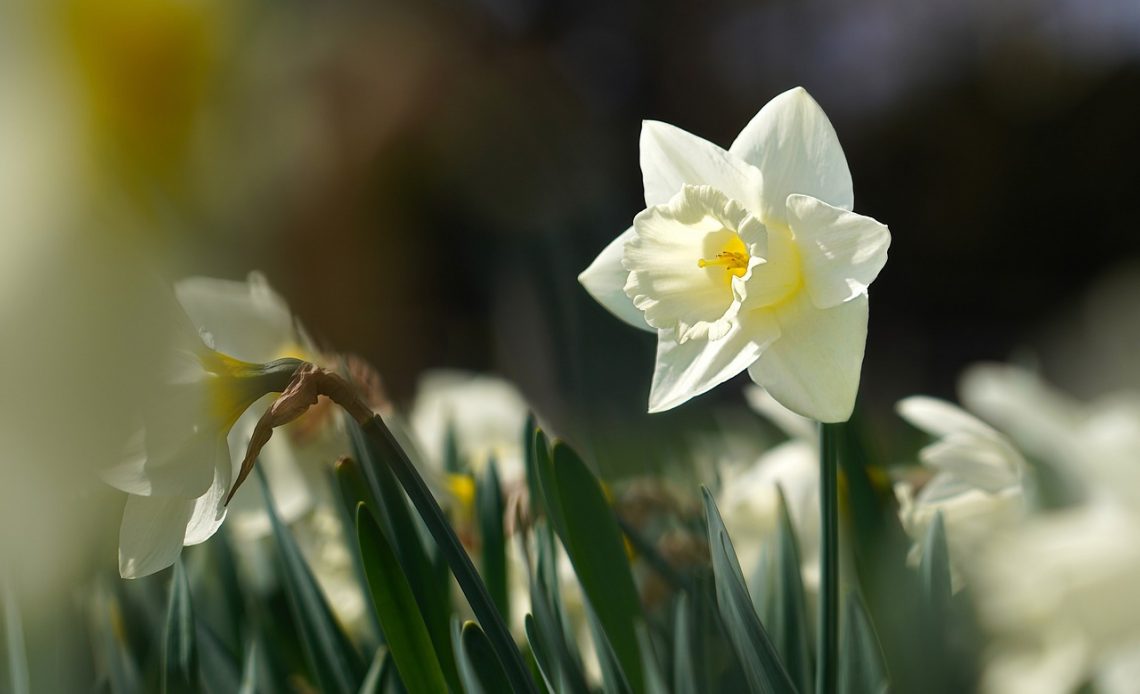
In this article, we will delve into the world of narcissus photography and uncover the secrets to capturing breathtaking images of these beautiful flowers, commonly known as daffodils. Whether you are a seasoned photographer or just starting out, these techniques and tips will help you elevate your photography skills and create stunning visuals that truly showcase the allure of narcissus.
Photographing narcissus flowers requires a keen eye for detail and an understanding of the right techniques to bring out their natural beauty. From choosing the right equipment to mastering lighting techniques and composition, we will guide you through every step of the process to ensure that your narcissus photographs are nothing short of extraordinary.
Choosing the Right Equipment
When it comes to capturing the beauty of narcissus flowers in your photographs, having the right equipment is crucial. The essential camera gear and accessories can make a significant difference in the quality and impact of your images. Let’s explore what you need to have in your photography toolkit to ensure stunning results.
1. Camera: Invest in a good quality DSLR or mirrorless camera that allows you to have full control over the settings. This will enable you to adjust the aperture, shutter speed, and ISO to capture the details and colors of the narcissus flowers accurately.
2. Lens: A macro lens is highly recommended for photographing narcissus flowers. It allows you to get up close and capture the intricate details of the petals and stamen. A focal length of 60mm to 100mm is ideal for this type of photography.
3. Tripod: Using a tripod is essential for achieving sharp and steady shots. It helps eliminate camera shake and allows you to experiment with different compositions without worrying about stability. Look for a sturdy tripod that can support the weight of your camera and lens.
4. Remote Shutter Release: A remote shutter release or a cable release is handy when photographing narcissus flowers. It allows you to trigger the camera without touching it, minimizing the risk of any movement that could result in blurry images.
5. Reflector: A reflector can be a valuable tool for manipulating light and enhancing the colors of the narcissus flowers. It helps bounce light onto the subject, reducing harsh shadows and creating a more balanced and pleasing lighting effect.
6. Lens Filters: Consider using lens filters to enhance the colors and add creative effects to your narcissus flower photographs. A polarizing filter can reduce glare and increase color saturation, while a neutral density filter can help you achieve longer exposures for dreamy, ethereal effects.
By equipping yourself with the right camera gear and accessories, you’ll be well-prepared to capture the beauty of narcissus flowers in your photographs. Now that you have the essential equipment, let’s move on to mastering lighting techniques to make your images truly stand out.
Mastering Lighting Techniques
Mastering lighting techniques is essential for capturing stunning photographs of narcissus flowers. By understanding how to utilize both natural and artificial lighting, you can enhance the colors and textures of these beautiful flowers in your images.
When it comes to natural lighting, it’s important to explore different lighting conditions and angles to create captivating photographs. The golden hour, which occurs during sunrise or sunset, offers soft, warm light that can add a magical touch to your narcissus flower photos. By taking advantage of this time of day, you can create images with a dreamy and enchanting atmosphere.
Another technique to consider is backlighting. By positioning the light source behind the narcissus flowers, you can create stunning silhouettes and enhance the translucent petals. This technique adds depth and drama to your images, creating a visually striking effect.
On the other hand, artificial lighting can also be used to enhance your narcissus flower photographs. Flash and continuous lighting can add a different dimension to your images, allowing you to control the intensity and direction of light. Experiment with different lighting setups to create the desired mood and highlight the unique features of the narcissus flowers.
By mastering lighting techniques, you can elevate your narcissus flower photography and capture images that truly showcase the colors and textures of these beautiful blooms.
Utilizing Natural Light
When it comes to capturing stunning photographs of narcissus flowers, utilizing natural light can make a world of difference. By exploring different lighting conditions and angles, you can create captivating and well-lit images of these beautiful flowers in outdoor settings.
One of the key aspects to consider when utilizing natural light is the time of day. The golden hour, which occurs during the early morning or late afternoon, provides soft and warm light that can add a magical touch to your narcissus flower photos. During this time, the angle of the sun creates a flattering glow and enhances the colors and textures of the flowers.
Another technique to consider is backlighting. By positioning the narcissus flower between your camera and the light source, such as the sun, you can create stunning silhouettes and enhance the translucent petals. This technique adds depth and drama to your photographs, making them truly stand out.
When exploring different lighting conditions and angles, don’t be afraid to experiment. Move around the flower, change your perspective, and observe how the light interacts with the petals. By doing so, you can find the perfect angle and lighting condition that brings out the best in the narcissus flowers.
Golden Hour Magic
The golden hour, also known as the magic hour, is a period of time shortly after sunrise or before sunset when the light is soft, warm, and diffused. This is the perfect time to capture stunning photographs of narcissus flowers and add a magical touch to your images. During this time, the angle of the sun is low, creating a beautiful golden glow that enhances the colors and textures of the flowers.
To make the most of the golden hour, it’s important to plan ahead and be prepared. Here are some tips to help you take advantage of this magical time:
- Check the weather forecast: Make sure to keep an eye on the weather forecast to ensure clear skies and optimal lighting conditions during the golden hour.
- Arrive early: Give yourself enough time to set up your equipment and find the perfect spot to capture the narcissus flowers in the golden light.
- Experiment with angles: Try shooting from different angles and perspectives to capture the best composition. The low angle of the sun during the golden hour can create long shadows and interesting patterns.
- Use a tripod: As the light during the golden hour can be low, using a tripod will help you keep your camera steady and avoid any blurriness in your photos.
- Shoot in manual mode: To have full control over your exposure settings, switch to manual mode and adjust your aperture, shutter speed, and ISO accordingly.
By following these tips and taking advantage of the soft, warm light during the golden hour, you can add a magical touch to your narcissus flower photos and create stunning images that will captivate viewers.
Backlighting Techniques
Backlighting is a powerful technique that can add a touch of magic to your narcissus flower photographs. By positioning the light source behind the flower, you can create stunning silhouettes and enhance the translucent petals of the narcissus flower.
When backlighting a narcissus flower, the light passes through the petals, highlighting their delicate structure and creating a beautiful glow. This technique works particularly well with narcissus flowers, as their petals are often translucent, allowing the light to shine through.
To achieve the best results with backlighting, it’s important to consider the angle and intensity of the light. Experiment with different angles to find the most flattering position for the flower. You can also adjust the intensity of the backlight by using a diffuser or adjusting the distance between the light source and the flower.
Additionally, backlighting can be combined with other techniques, such as using a reflector or fill flash, to further enhance the details and colors of the narcissus flower. By mastering the art of backlighting, you can create truly breathtaking photographs that showcase the beauty and delicacy of narcissus flowers.
Using Artificial Lighting
Using artificial lighting can greatly enhance the drama and depth of your narcissus flower photographs. There are two main types of artificial lighting that you can utilize: flash and continuous lighting.
Flash photography involves using a flash unit, either built-in or external, to provide a burst of light when capturing your images. This can help to illuminate the flowers and bring out their vibrant colors. Experiment with different angles and distances to achieve the desired effect. You can also use diffusers or bounce cards to soften the light and reduce harsh shadows.
Continuous lighting, on the other hand, involves using a constant light source to illuminate your subject. This can be achieved with studio lights or even household lamps. Continuous lighting allows you to see the effects of the light in real-time, making it easier to adjust and fine-tune your setup. Consider using different colored gels or filters to add a creative and unique touch to your narcissus flower photographs.
Composition and Framing
When it comes to capturing stunning photographs of narcissus flowers, composition and framing play a crucial role in creating visually appealing and impactful images. Understanding the principles of composition and framing can help you create photographs that not only showcase the beauty of the narcissus flowers but also engage and captivate the viewer.
Composition refers to the arrangement of elements within the frame of your photograph. It involves making deliberate choices about what to include and exclude from the image, as well as how to position and balance the various elements. When photographing narcissus flowers, consider the following composition techniques:
- Rule of Thirds: The rule of thirds is a fundamental principle in photography that involves dividing the frame into nine equal parts using two horizontal and two vertical lines. By placing the main subject or focal point of your image along these lines or at their intersections, you can create a visually pleasing and well-balanced composition.
- Leading Lines: Utilize leading lines, such as paths, fences, or flower stems, to guide the viewer’s eye towards the narcissus flowers. These lines can add depth and create a sense of movement in your photographs.
- Foreground and Background: Pay attention to the foreground and background of your composition. Including an interesting foreground element, such as a fallen petal or a dewdrop, can add depth and dimension to your image. Similarly, a well-chosen background can complement and enhance the beauty of the narcissus flowers.
Framing, on the other hand, involves using elements within the scene to frame or surround the subject of your photograph. This technique can draw attention to the narcissus flowers and create a sense of depth. Consider the following framing techniques:
- Natural Frames: Look for natural elements, such as tree branches or archways, that can serve as a frame for the narcissus flowers. By positioning the flowers within the frame, you can create a visually interesting composition.
- Frames within Frames: Explore opportunities to use objects or elements within the scene to create a frame within the frame. This can add layers of visual interest and draw attention to the narcissus flowers.
- Foreground Elements: Use foreground elements, such as grass or rocks, to create a sense of depth and add visual interest to your photographs of narcissus flowers. These elements can act as a frame and draw the viewer’s eye towards the main subject.
By understanding and applying the principles of composition and framing, you can elevate your photographs of narcissus flowers to a whole new level. Experiment with different techniques and perspectives to create visually appealing and impactful images that truly capture the beauty of these stunning flowers.
Rule of Thirds
The rule of thirds is a fundamental principle in photography composition that can greatly enhance the visual appeal of your narcissus flower photographs. This technique involves dividing your frame into a grid of nine equal sections, created by two horizontal and two vertical lines. By placing your subject or key elements of interest along these lines or at their intersections, you can create a more balanced and visually pleasing composition.
Imagine the grid as a tic-tac-toe board, and position your narcissus flower along one of the lines or at the points where the lines intersect. This placement helps to create a sense of balance and harmony in your image. It also adds interest and guides the viewer’s eye towards the main subject. By following the rule of thirds, you can avoid placing your subject in the center of the frame, which can often result in a static and less engaging composition.
To apply the rule of thirds effectively, you can activate the grid overlay on your camera’s viewfinder or LCD screen. This feature helps you visualize the grid and align your subject accordingly. If your camera doesn’t have this option, you can imagine the grid lines and intersections while composing your shot.
Remember, the rule of thirds is not a strict rule, but rather a guideline that can be creatively interpreted. Feel free to experiment and adjust the placement of your narcissus flower within the grid to achieve the desired effect. By incorporating the rule of thirds into your photography, you can create captivating and visually dynamic compositions that highlight the beauty of narcissus flowers.
Experimenting with Perspectives
When it comes to capturing captivating photographs of narcissus flowers, experimenting with perspectives can make a world of difference. By exploring different angles, viewpoints, and perspectives, you can add interest and uniqueness to your images.
One way to experiment with perspectives is by getting down low and shooting from a worm’s-eye view. This can create a sense of grandeur and make the narcissus flowers appear larger than life. On the other hand, shooting from a bird’s-eye view can provide a unique and interesting perspective, especially when the narcissus flowers are arranged in a pattern or a field.
You can also try shooting from unconventional angles, such as from behind the flowers or through other elements in the environment. This can add depth and create a sense of mystery in your photographs. Don’t be afraid to think outside the box and try different perspectives to make your narcissus flower photographs stand out.
Choosing the Right Equipment
When it comes to photographing narcissus flowers, having the right equipment is essential. Here are some key camera gear and accessories that will help you capture stunning images of these beautiful flowers:
- A DSLR or mirrorless camera: These types of cameras offer manual controls and interchangeable lenses, allowing you to have more control over your images.
- A macro lens: Narcissus flowers have intricate details that you’ll want to capture up close. A macro lens will allow you to focus on these details and capture them with sharpness and clarity.
- A tripod: To achieve sharp and steady shots, especially in low light conditions, a tripod is a must-have. It will help you keep your camera stable and reduce any blur caused by camera shake.
- A reflector: When shooting outdoors, a reflector can be used to bounce light onto your subject, reducing harsh shadows and adding a touch of brightness to your images.
By investing in these essential pieces of equipment, you’ll be well-equipped to capture the beauty of narcissus flowers in your photographs.
Frequently Asked Questions
- Q: What camera equipment do I need for photographing narcissus flowers?
A: To capture stunning photographs of narcissus flowers, you will need a DSLR or mirrorless camera, a macro lens for close-up shots, a tripod for stability, and optional accessories like a remote shutter release and a reflector for controlling light.
- Q: How can I make the colors of narcissus flowers pop in my photos?
A: Utilizing natural lighting during the golden hour, when the sun is low in the sky, can enhance the colors of narcissus flowers. Additionally, you can experiment with backlighting techniques to create a beautiful glow and emphasize the translucent petals of the flowers.
- Q: Are there any composition tips for capturing visually appealing narcissus flower photographs?
A: Yes! Applying the rule of thirds can help you create balanced compositions. By placing the main subject of your photo along the intersecting lines of the grid, you can achieve a visually pleasing result. You can also try different angles and perspectives to add interest and uniqueness to your images.
- Q: Can I use artificial lighting for photographing narcissus flowers?
A: Absolutely! Artificial lighting, such as flash or continuous lighting, can be used to add drama and depth to your narcissus flower photographs. It allows you to have more control over the lighting conditions, especially when shooting indoors or during low-light situations.
- Q: How do I capture the delicate details of narcissus flowers?
A: Using a macro lens and focusing on the intricate details of the flowers can help you capture their delicate beauty. It’s important to have a steady hand or use a tripod to ensure sharpness in your close-up shots.

